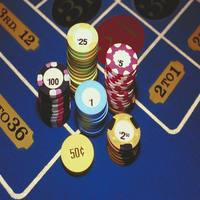Hormones, Addictions and Mood

People working with mental illness have been for years now been puzzled by two observations. The first is that mood disorders and schizophrenia follow quite different trajectories in men and women. Women tend to be more vulnerable to mood disorders and if they get schizophrenia it tends to be less severe and to have fewer “negative” symptoms, such as flat, blunted or constricted affect and emotion, poverty of speech and lack of motivation until after menopause. We have looked at some of the reasons for the different rates of mood disorder, in terms of relationships and social pressures, but there must also be a biological component. The second puzzle is that women are more vulnerable to addictive drugs in the days before they ovulate.
New research published in the Proceedings of the National Academy of Sciences may provide part of the answer to both puzzles.
Colleagues at the National Institute of Mental Health (NIMH), a component of the National Institutes of Health (NIH), have conducted a fascinating imaging study that has shown that fluctuations in levels of sex hormones during women’s menstrual cycles affect the responsiveness of the reward systems in the brain.
The reward system circuits include the:
- Prefrontal cortex, which has key roles in thinking, planning and in the control of our emotions and impulses
- Amygdala, which is involved in rapid and intense emotional reactions and the formation of emotional memories
- Hippocampus, which is involved in learning, memory and navigation
- Striatum that relays signals from these areas to the cerebral cortex
It has been known for some time that neurons in the reward circuits are rich in estrogen and progesterone receptors. However, how these hormones influence reward circuit activity in humans has remained unclear.
The researchers used functional magnetic resonance (fMRI) imaging to examine brain activity of 13 women and 13 men while they performed a task that involved simulated slot machines. The women were scanned while they did the task, both before and after ovulation.
When anticipating a reward, in the pre-ovulation phase of their menstrual cycles the women showed more activity in the amygdala and frontal cortex. When women were actually winning prizes, their reward systems were more active if they were in the phase of their menstrual cycle preceding ovulation. This phase of the cycle is dominated by estrogen, compared to postovulatory phase when estrogen and progesterone are both present. When winning, the main systems that became active were in the parts of the brain involved in pleasure and reward.
The researchers also demonstrated that the reward-related brain activity was directly linked to levels of sex hormones. Activity in the amygdala and hippocampus was in directly linked to estrogen levels, regardless of where a woman was in her cycle. When women won prizes during the post-ovulatory phase of the cycle, progesterone modulated the effect of estrogen on the reward circuit.
Men showed a different activation profile from women during both anticipation and delivery of rewards. Men had more activity in the striatum during anticipation compared with women. On the other hand, women had more activity in a frontal cortex when they won prizes.
This research could have a number of important implications. The most obvious is that it confirms what many women know already: they are more likely to take addictive substances or to engage in pleasurable – but perhaps impulsive or risky – behaviors just before they ovulate.
It is not difficult to imagine why this might have developed during evolution.
“Coming to terms with the rhythms of women’s lives means coming to terms with life itself, accepting the imperatives of the body rather than the imperatives of an artificial, man-made, perhaps transcendentally beautiful civilization. Emphasis on the male work-rhythm is an emphasis on infinite possibilities; emphasis on the female rhythms is an emphasis on a defined pattern, on limitation.”
–Margaret Mead (American Anthropologist and Writer, 1901-1978)






